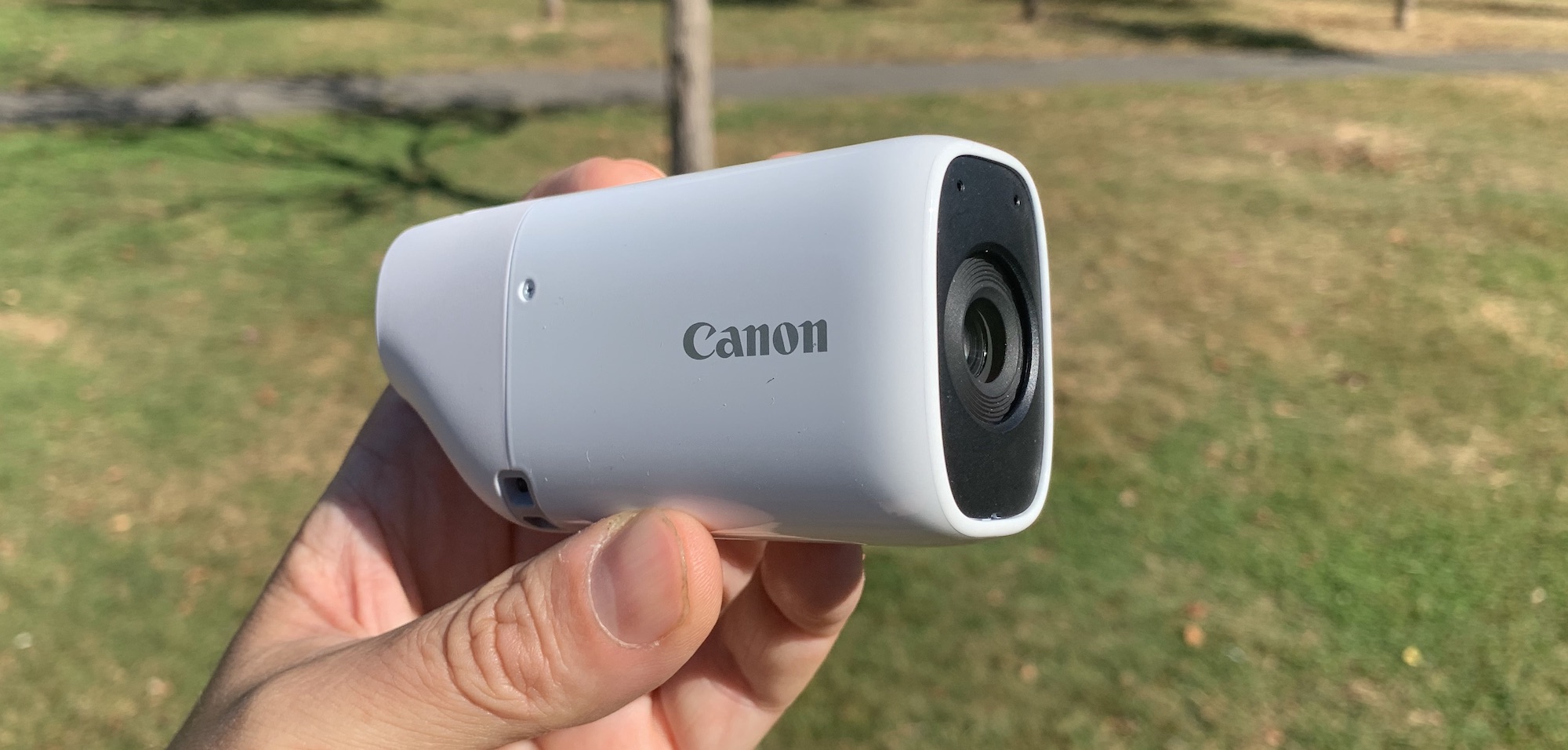Early Verdict
The Canon PowerShot Zoom is a small, light camera that lets you get really close to the action.
Pros
- +
Small and light
- +
Very long zoom
Cons
- -
Picture quality is so-so
- -
Hard to hold stable
Why you can trust Tom's Guide
It's tough trying to create a new category of cameras, but that's just what Canon is trying to do with the Canon PowerShot Zoom, a small handheld device that's capable of taking 800mm photos and videos. Canon is aiming it at people who want the ability to get close to the action without having to lug a superzoom or massive telephoto lens.
I had a chance to use the Canon PowerShot Zoom for a few days; while I'm still evaluating all of its features, here are my first impressions.
- Best cameras
- Amazon Prime Day deals: Best deals right now
Canon PowerShot Zoom: Price and availability
The Canon PowerShot Zoom will be available in late November for $299. Take a look at our Canon promo codes for ways to lower the cost.
Zoom: 100/400mm optical, 800mm digital
Size: 4 x 2 x 1.3 inches
Weight: 5.1 ounces with microSD cards
Sensor: 12MP CMOS
Photo size: 12MP
Aperture: f/5.6-6.3
ISO: 100-3200
Electronic viewfinder: 0.39-inch 2.3m dot, 60 fps
Video resolution: 1080p/30 fps
Wireless: Wi-Fi, Bluetooth
Battery life: 1:20 (roughly 150 shots)
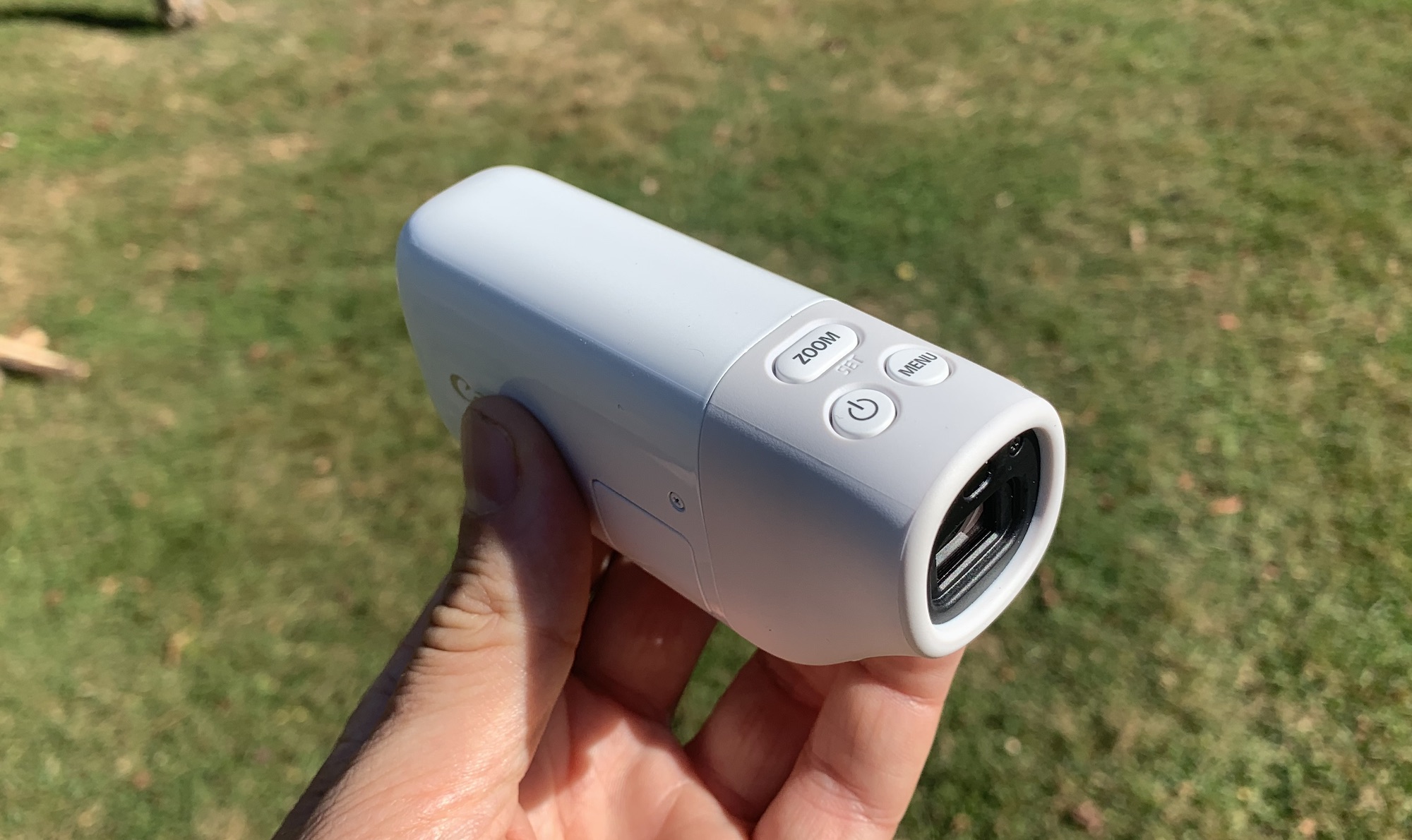
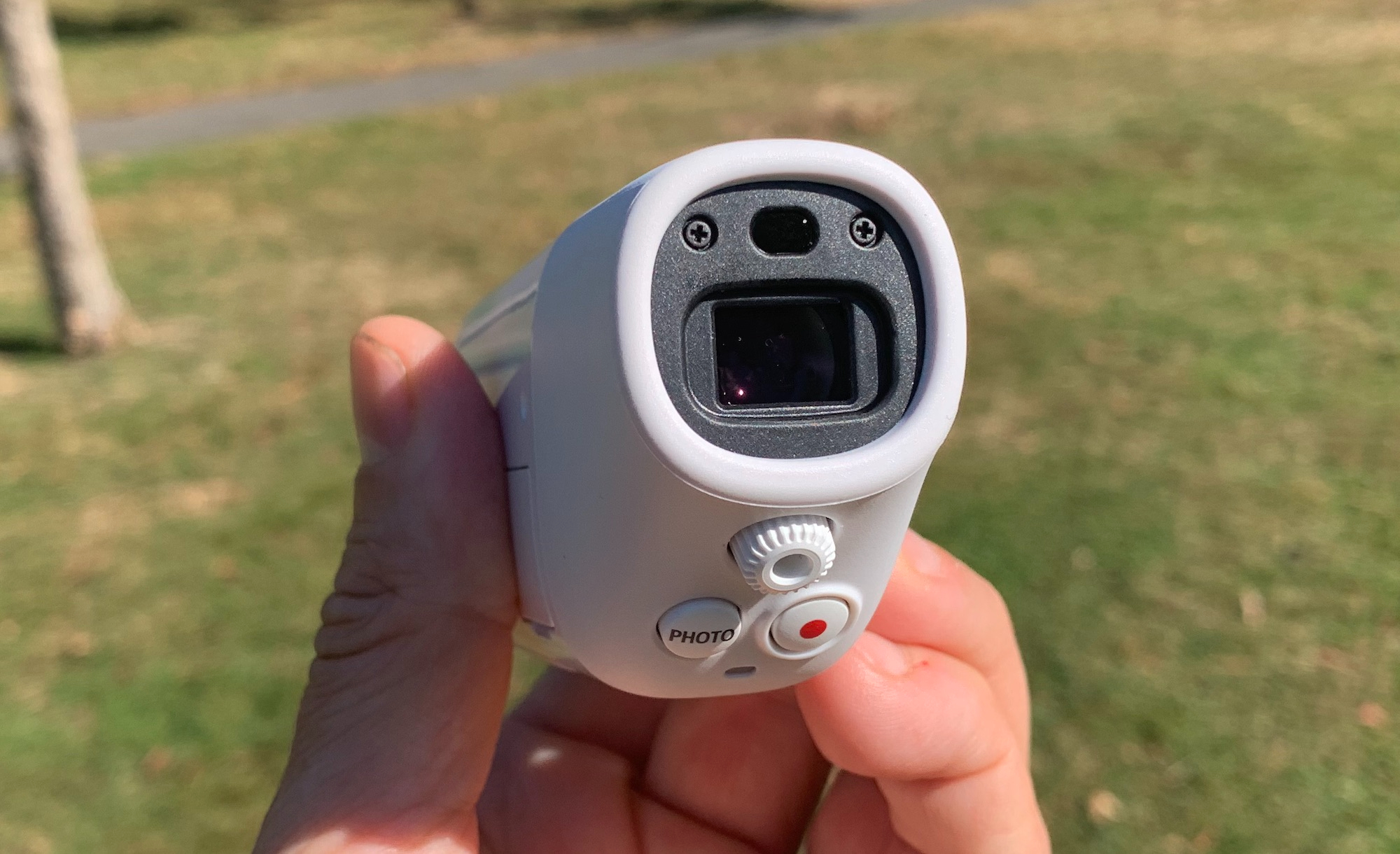

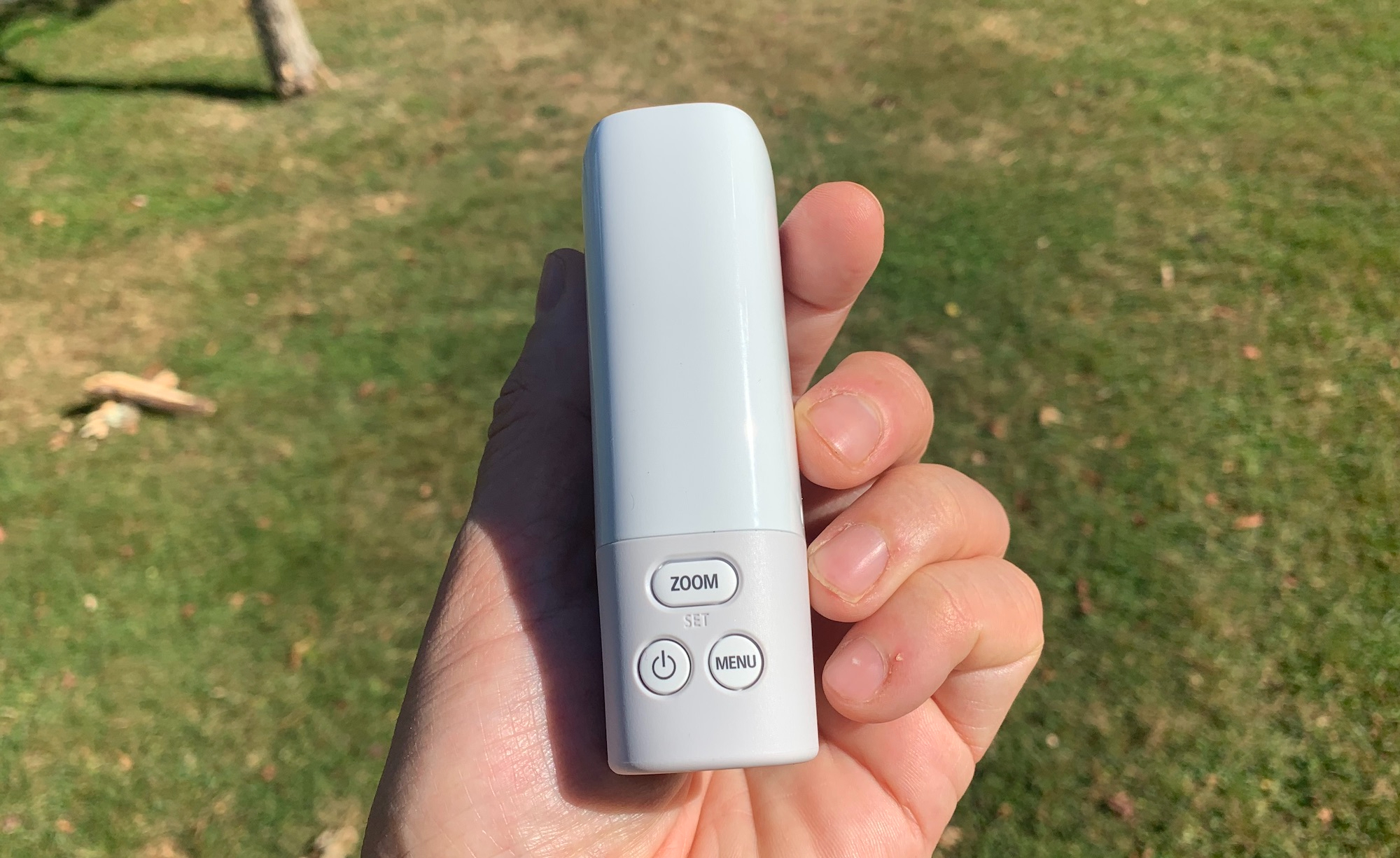

Canon PowerShot Zoom: Design
The PowerShot Zoom has a roughly rectangular shape, with one end tapering to the electronic viewfinder. Measuring 4 x 2 x 1.3 inches and weighing 5.1 ounces, it’s small enough to slip into your coat pocket. It'll fit in looser pants pockets, too.
Beneath the viewfinder is a dial to adjust the diopter as well as one button to take still photos, and another button to start recording video. On the top of the camera is a Zoom button, which lets you switch between 100mm, 400mm, and 800mm-equivalent zooms. In front of that is a power button and a menu button.
The positioning of the photo and video buttons makes it practically impossible to use the Powershot Zoom with just one hand. This isn’t necessarily a bad thing, as it helps to use your second hand to steady the camera, especially when using the 800mm zoom. Still, it's hard to identify the buttons by feel alone.
While the Powershot Zoom is light enough that you can hold it for a while and not get fatigued, I do wish it had a tripod mount on the bottom.
Get instant access to breaking news, the hottest reviews, great deals and helpful tips.
The left side of the camera has a small door that conceals the microSD card slot as well as the USB-C charging port.
Canon PowerShot Zoom: Photo quality
The PowerShot Zoom can take photos at 100mm and 400mm, and digital zoom at 800mm. Those are the only three focal lengths, though; you can’t choose any in-between numbers.
The PowerShot Zoom’s 12-MP CMOS sensor (1/3-inch type) is similar to that on Canon’s PowerShot SX series of cameras, and has an aperture of f/5.6-6.3 and an ISO of 100-3200. The camera also has optical image stabilization, but Canon did not specify to the number of stops.
You can’t adjust shutter speed, ISO, or the f/stop manually, but there is an exposure compensation in the settings menu.
Photos taken with the PowerShot Zoom were okay, but nothing spectacular.



Take for example, these photos above of a squirrel sitting on a fence. The zoom range is impressive, but there's a general lack of sharpness and definition throughout the photo. It feels like something I took with a very old camera phone. Even though it's a well-lit scene, you can see a great deal of noise, especially in darker areas.
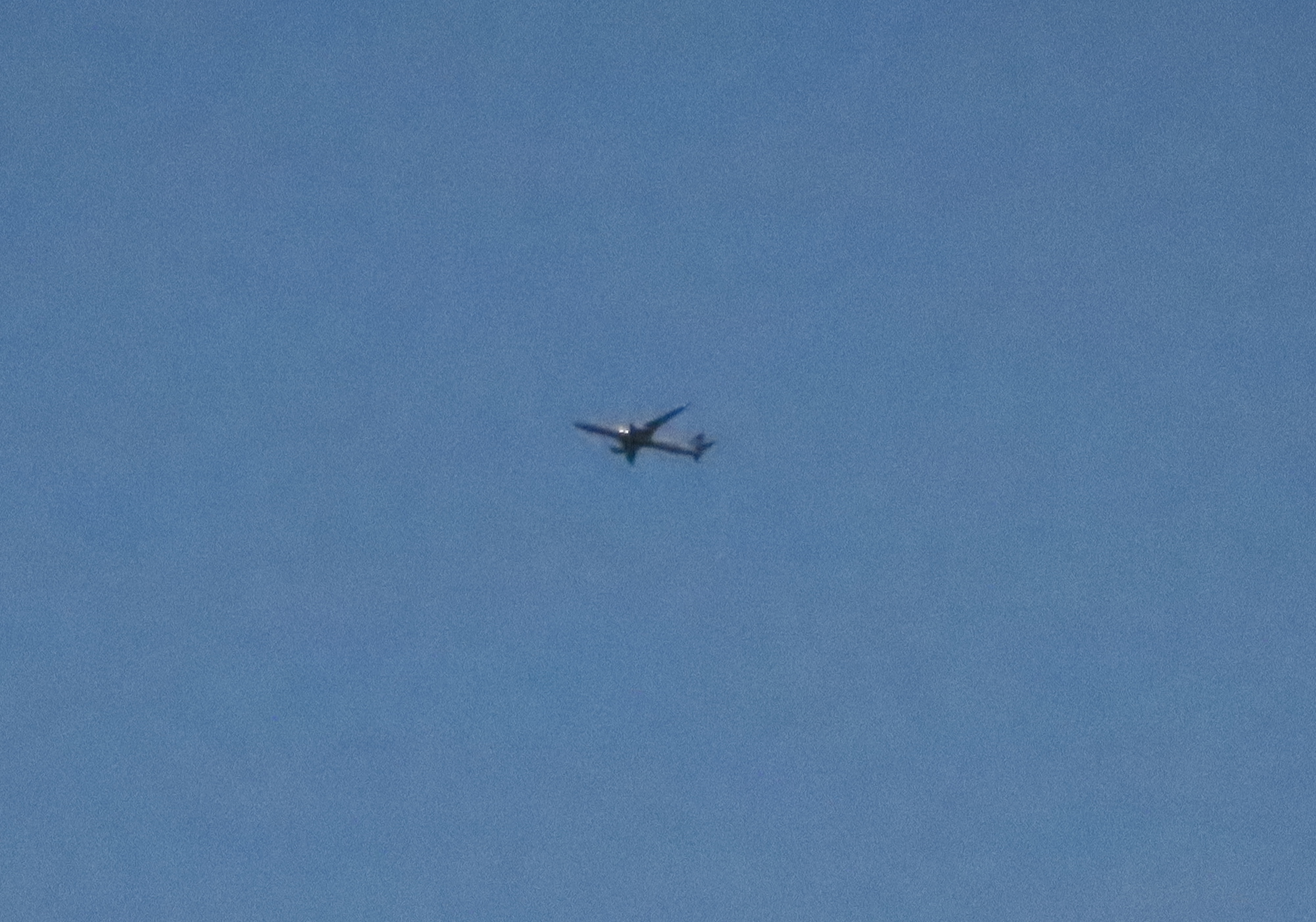
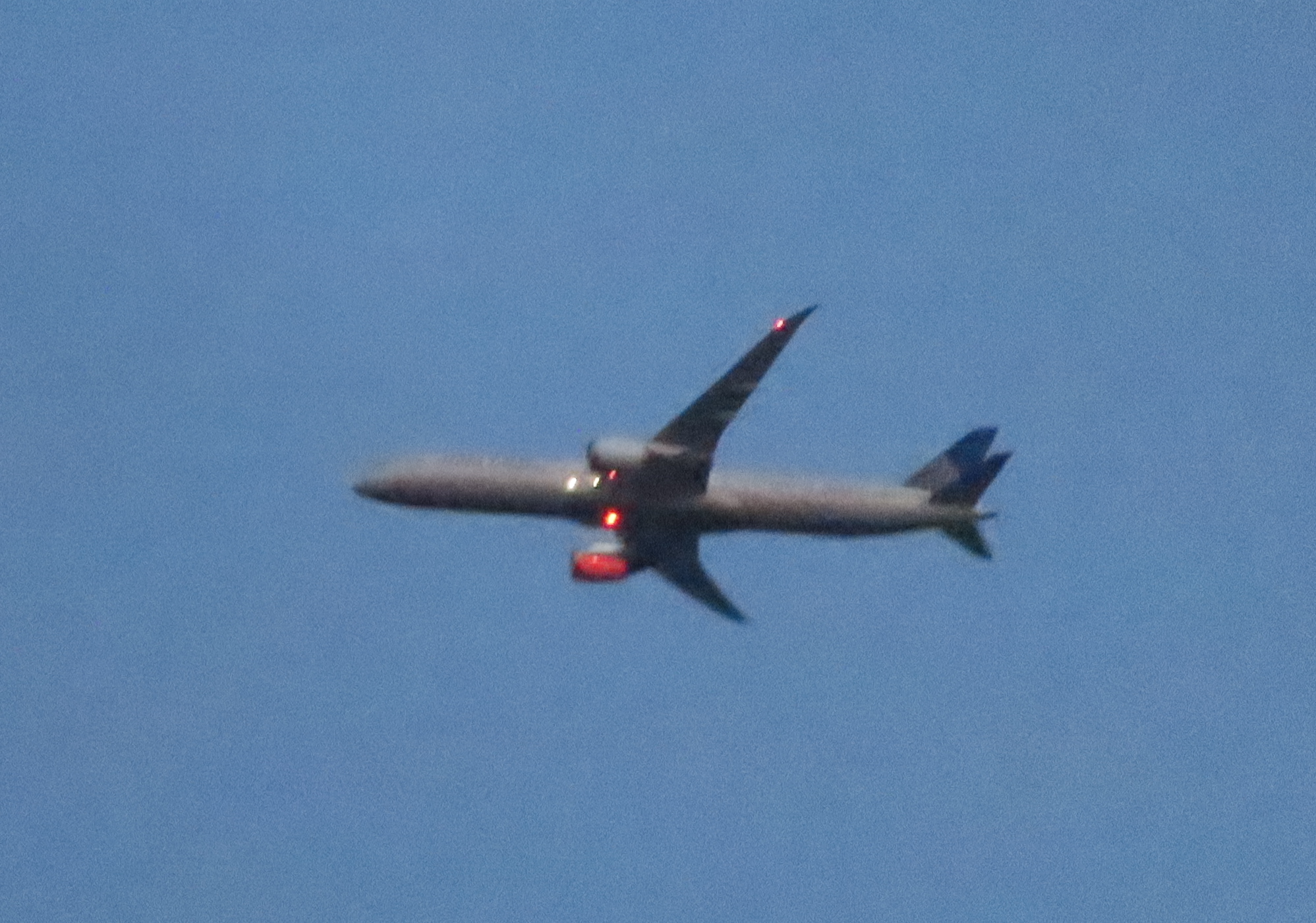
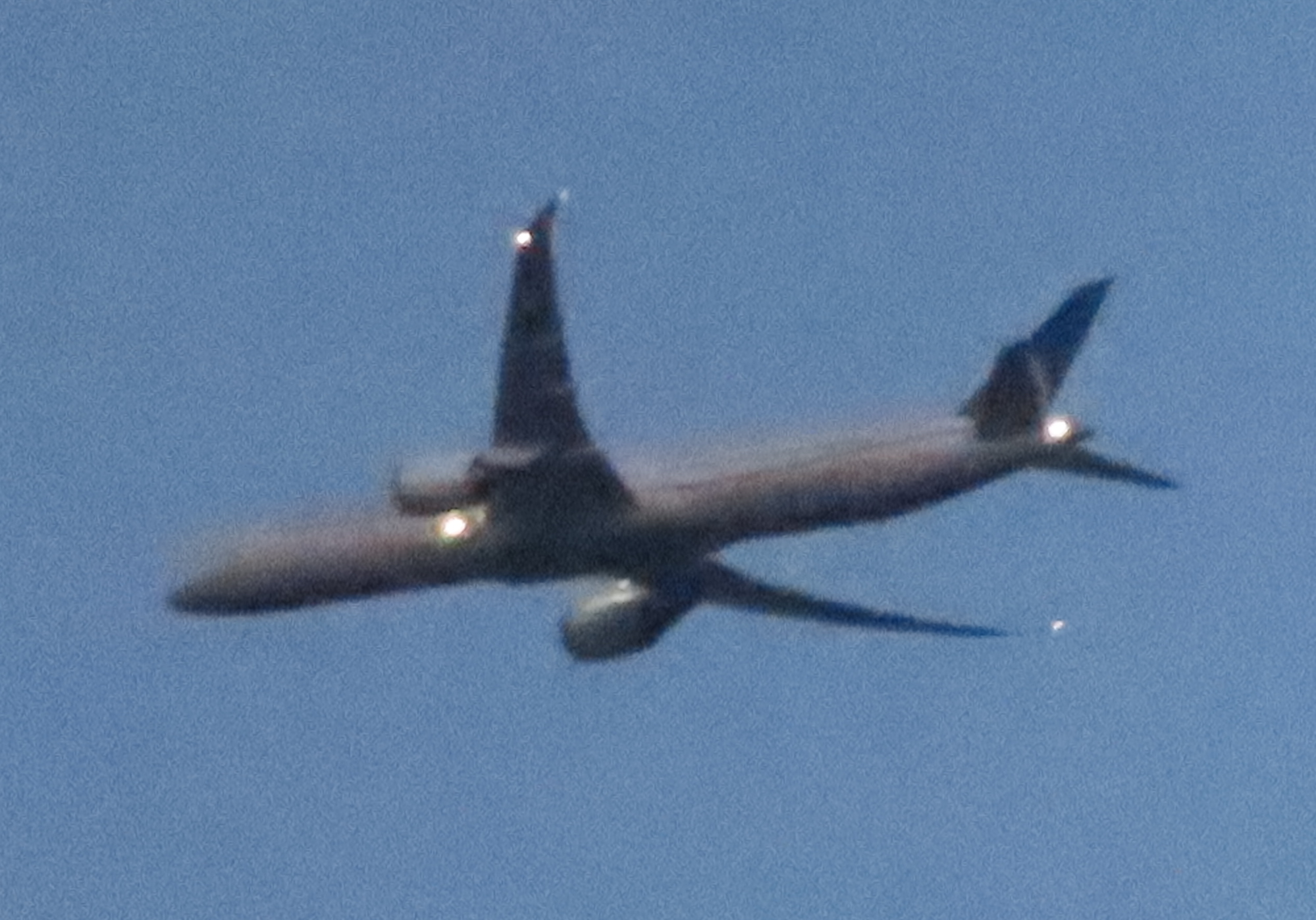
A similar scenario played out when I took a picture of a United jet flying overhead around dusk. While it's nice that you can get up close and personal—you can make out the United logo on the tail in the 400mm photo—it's not something you'd want to hang on your wall.
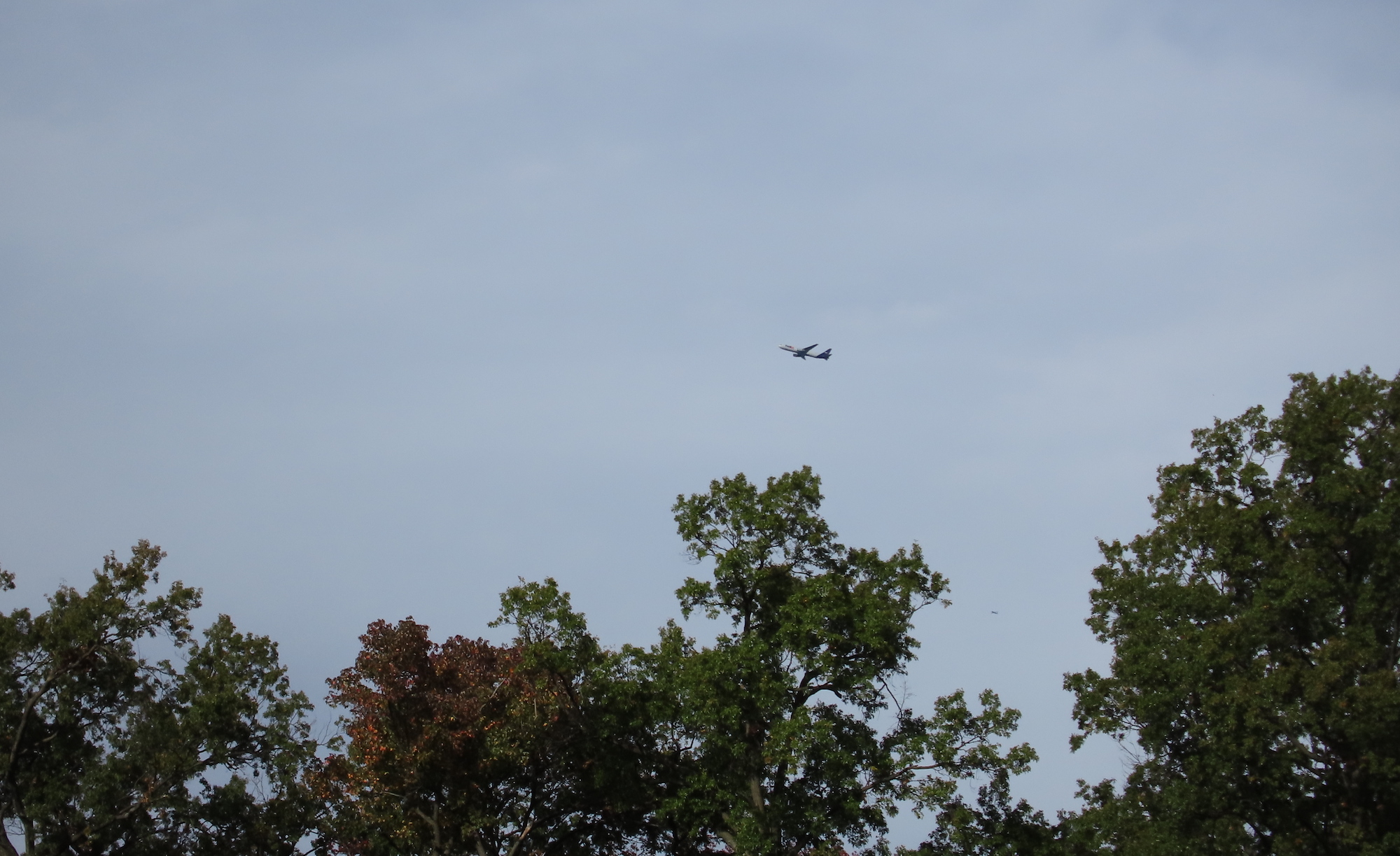

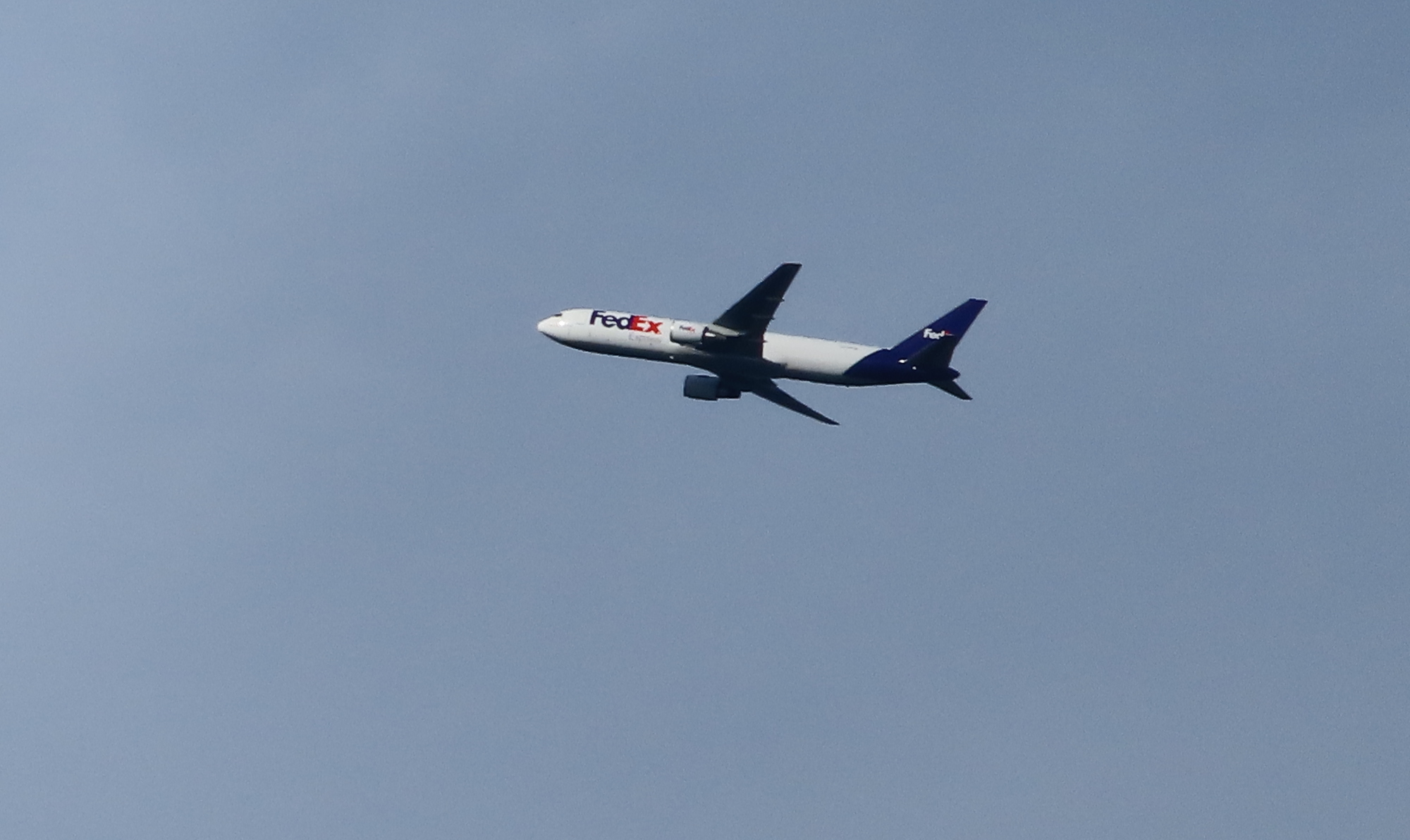
I took a few more photos of airplanes when it was brighter out, and got better results. Here, at the 800mmm setting, you can clearly read the FedEx livery on the tail, and almost make out FedEx on the engine cowling. You want to snap away, though: a number of shots came out blurry, as the Powershot Zoom had trouble maintaining focus.
Canon Powershot Zoom: Video quality
The lack of an easy way to stabilize the camera made shooting video at a distance difficult, especially when using the maximum zoom. I tried tracking an airplane as it jetted across the sky, but had trouble keeping it in the frame. Moreover, the Powershot Zoom's autofocus didn't track the plane, resulting in some blurry frames. Its motion stabilization worked to a limited extent.
Audio was good, but you can clearly hear the camera's mechanism as you zoom in and out.
Canon PowerShot Zoom: Outlook
The Canon PowerShot Zoom feels like a camera for those who want a device that lets them get really close to the action, but who don't necessarily care about the final quality of the photos. It might be a good device for soccer moms and dads or someone who wants a high-tech monocular, and who doesn't want to buy a smartphone with a superzoom like the Samsung Galaxy S20 Ultra.
Photos and video I took with the PowerShot Zoom were adequate, but nothing great. And, it was hard to hold it steady, especially when aiming at things at a distance. There's nothing really like the PowerShot Zoom, which makes it difficult to compare with other devices. Its comparatively low price will make it attractive to those who value a light and powerful zoom above all else.

Michael A. Prospero is the U.S. Editor-in-Chief for Tom’s Guide. He oversees all evergreen content and oversees the Homes, Smart Home, and Fitness/Wearables categories for the site. In his spare time, he also tests out the latest drones, electric scooters, and smart home gadgets, such as video doorbells. Before his tenure at Tom's Guide, he was the Reviews Editor for Laptop Magazine, a reporter at Fast Company, the Times of Trenton, and, many eons back, an intern at George magazine. He received his undergraduate degree from Boston College, where he worked on the campus newspaper The Heights, and then attended the Columbia University school of Journalism. When he’s not testing out the latest running watch, electric scooter, or skiing or training for a marathon, he’s probably using the latest sous vide machine, smoker, or pizza oven, to the delight — or chagrin — of his family.
